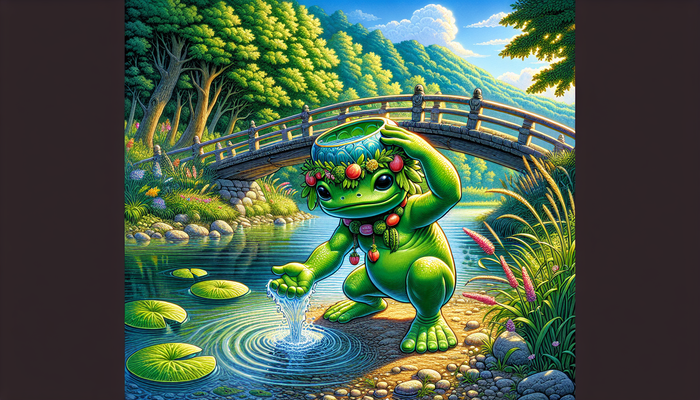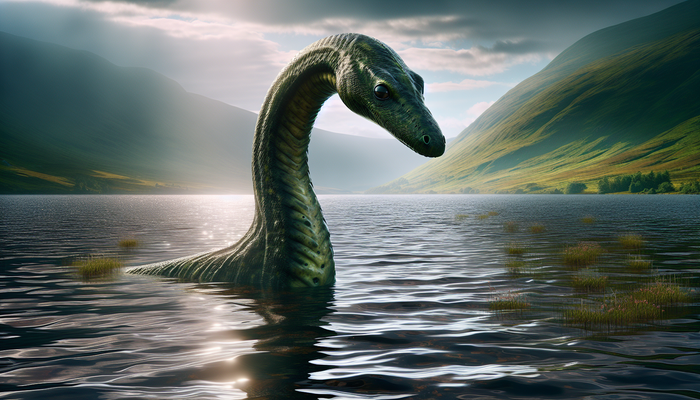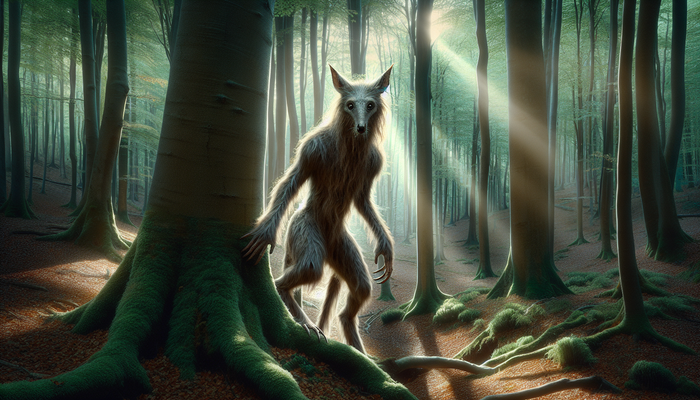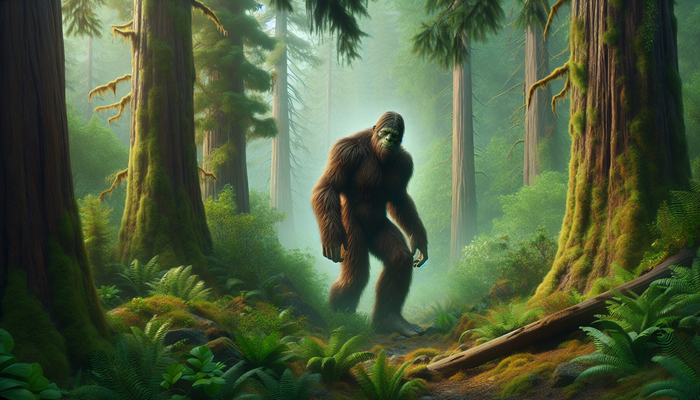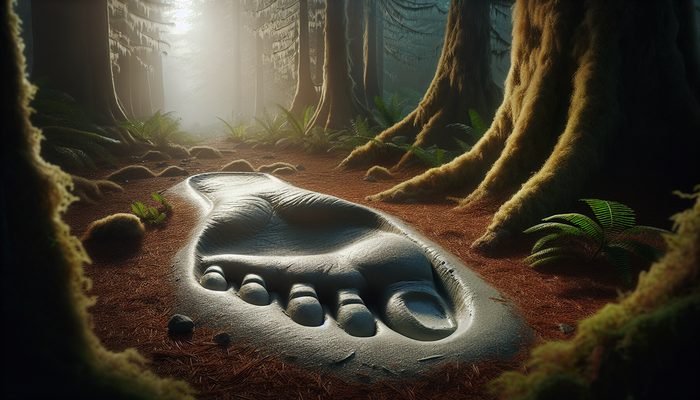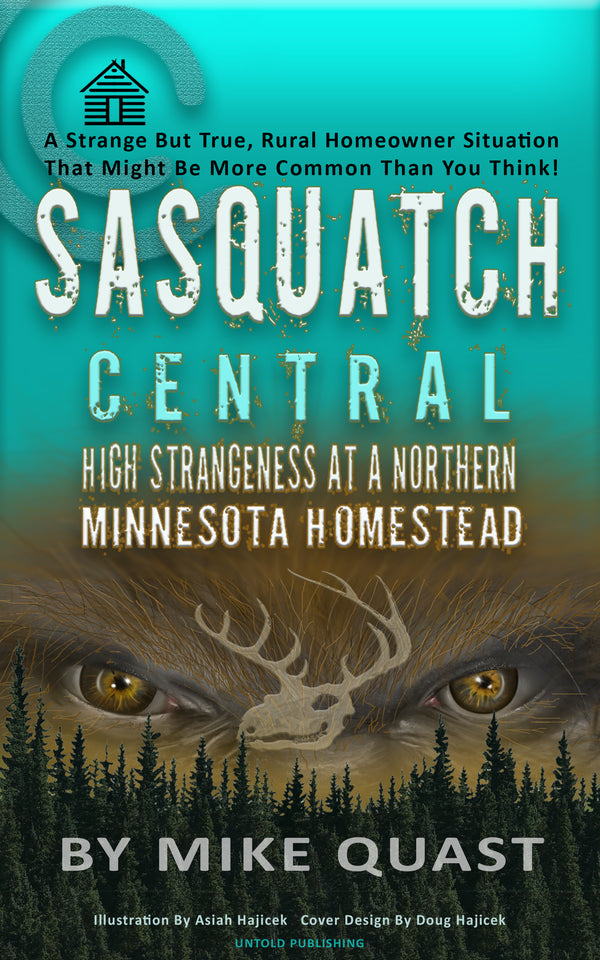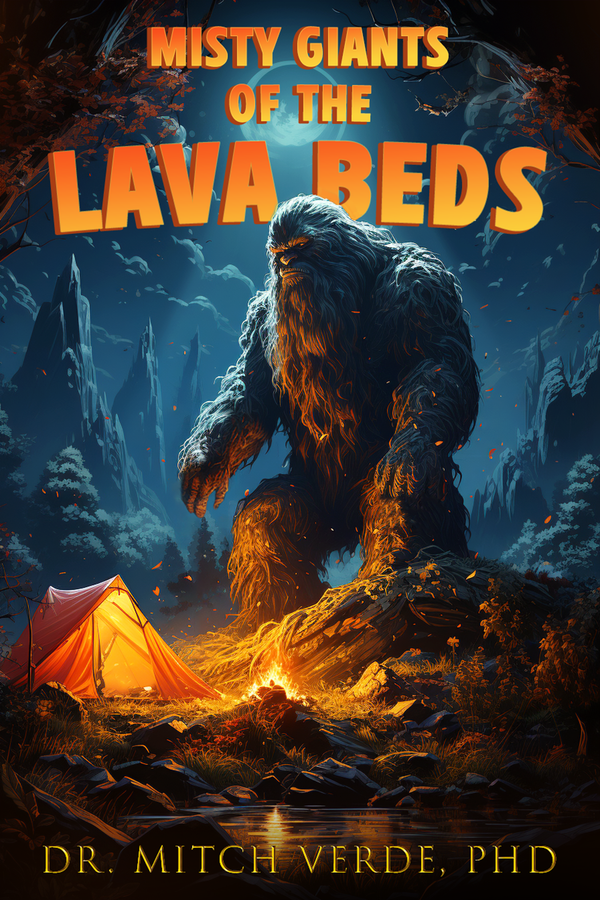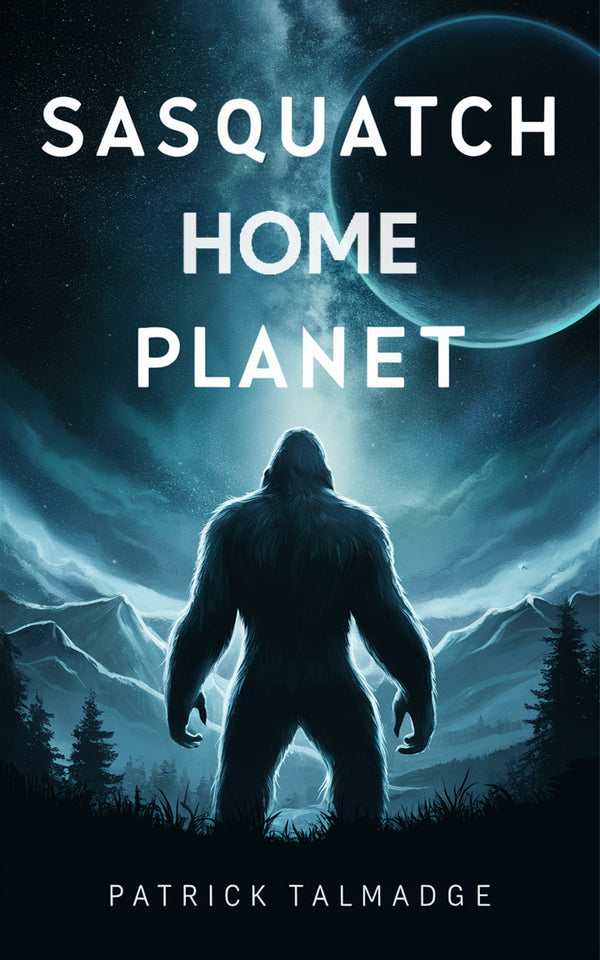The Black Bobcat: Mythical Creature or Melanistic Marvel?
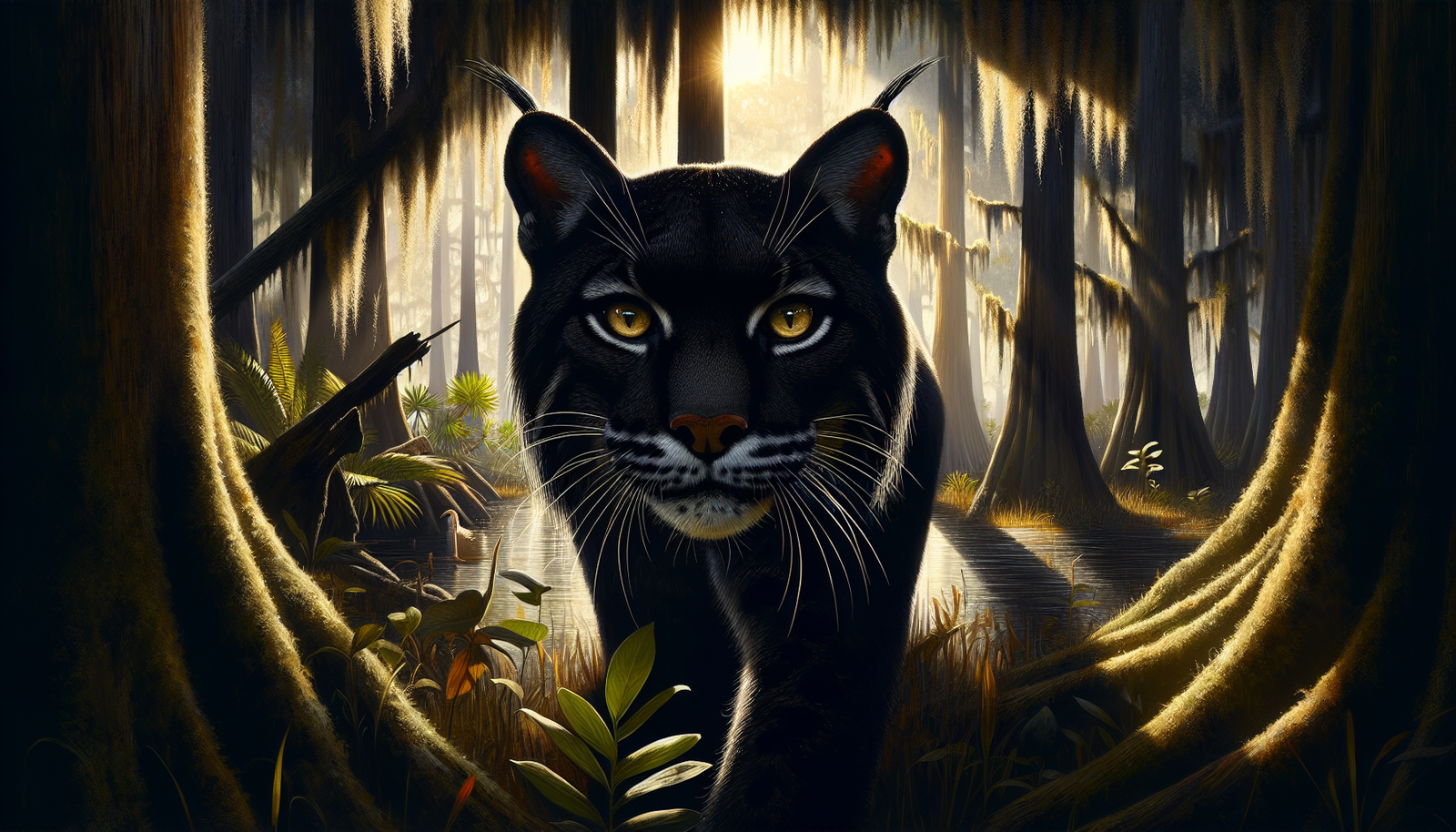
By Wade Beaumont, Cryptozoologist and Park Ranger
Picture this: you're out in the Florida swamps, minding your own business, when suddenly a sleek, shadowy figure slinks through the underbrush. At first glance, you might mistake it for a regular bobcat, but as it emerges into a patch of sunlight, you realize this is no ordinary feline. Its coat is an inky black, absorbing the light like a piece of the night sky come to life. You, my friend, have just spotted one of the rarest and most mesmerizing creatures in the natural world: a black bobcat.
Now, I know what you might be thinking. "Wade, aren't black bobcats just a myth, a campfire story told by old-timers to spook the youngsters?" Well, let me tell you, these magnificent melanistic marvels are as real as the hat on my head. But they're about as elusive as a ghost in a snowstorm, with only a handful of confirmed sightings across North America.
The Enigma of the Black Bobcat
You see, black bobcats are like the unicorns of the feline world - rare, mysterious, and captivating. There have only been around a dozen verified encounters with these shadowy cats, most of them concentrated in the southeastern United States, particularly in Florida. It's like the Sunshine State has a monopoly on melanistic bobcats!
But what exactly is melanism, you ask? It's the opposite of albinism, where an animal lacks pigment. Melanism is when there's an unusually high amount of the dark pigment melanin in an animal's fur and skin. It's the same condition that gives us black squirrels, black jaguars, and in this case, bewitchingly black bobcats.
Now, when I say "black," I don't mean these cats are the color of a moonless midnight. They're more of a very dark brown or charcoal hue. And if you catch one in just the right light, you might even spot the faint outlines of spots and stripes beneath that inky coat. Their eyes are usually a piercing yellow or green, and aside from their striking coloration, they have the same facial features and body structure as their tawny cousins.
Sightings and Range: Where the Shadows Prowl
So, where exactly do these enigmatic ebony felines roam? As I mentioned, most confirmed black bobcat sightings have occurred in Florida, with a smattering of reports from neighboring states like Georgia and the Carolinas. There have also been a couple of sightings in Texas and Washington state, just to keep things interesting.
But the real head-scratchers are the two confirmed cases from New Brunswick, Canada. One was way back in 1983, and the other was in 2016. That 1983 cat, a handsome devil if I do say so myself, is now a permanent resident of the New Brunswick Museum, a testament to just how rare these creatures are.
Now, you might think that a state like California, with its huge bobcat population, would be a hotspot for black bobcats. But strangely enough, there haven't been any confirmed sightings there. It's like these melanistic moggies have a preference for the humid, subtropical climates and dense vegetation of the Southeast.
Behavioral Patterns: Secrets of the Melanistic Hunters
So, do black bobcats behave any differently than their lighter-colored kin? That's the million-dollar question, and the truth is, we don't have a definitive answer yet. From what we can tell, they seem to share a lot of the same traits and habits as regular bobcats.
They're solitary and territorial, preferring to avoid human contact whenever possible. They're most active around dawn and dusk, using their keen senses and stealthy stalking skills to ambush small prey like rabbits and rodents. It's possible that their dark coloration gives them an edge in camouflage and thermoregulation, but we don't have hard evidence to support that theory yet.
There have been a few anecdotal reports of black bobcats being a bit bolder or more curious around humans than their tawny counterparts, but it's hard to say if that's a genuine trend or just a fluke. One case that stands out is the tale of the fearless feline of Fort Lewis.
A wildlife photographer was out in the woods of Washington state, minding his own business, when a large, assertive black bobcat started making a beeline for him. Now, most bobcats would hightail it in the opposite direction at the first whiff of human scent, but not this guy. He waltzed right up to the photographer, bold as brass, before finally deciding to skedaddle when the camera started clicking.
Now, was this cat just a particularly curious individual, or had it become habituated to humans through previous encounters? It's hard to say for sure, but it just goes to show that even within a species, there can be some pretty quirky personality differences.
Population Dynamics: Shadows in the Stacks
Now, I know what you're all wondering: just how many of these black beauties are out there in the wild? The truth is, we don't have a solid headcount. Bobcats in general are pretty elusive critters, and their melanistic brethren are even more so. The best guesstimate we have is that there are around 20 confirmed black bobcats roaming North America, but there could very well be more lurking in the shadows of remote forests and swamps.
Like all bobcats, the black ones face challenges like habitat loss and fragmentation. As we humans continue to develop and sprawl, we're cutting into the prime real estate these cats need to thrive. There's no evidence that being melanistic is a disadvantage in and of itself, but it doesn't grant them any special protection from the usual threats, like getting hit by cars or ingesting rodenticides.
This is where citizen science comes in. Folks like you and me, armed with trail cameras and a keen eye, can play a big role in helping researchers track and study these elusive felines. Every sighting reported, every photo snapped, every location logged - it all helps paint a clearer picture of where these cats roam and what they're up against. It's a real collaborative effort between the experts in the lab coats and the amateur naturalists out in the field.
The Allure of the Black Bobcat: Our Fascination with Melanism
Now, let's talk about the real reason we're all here: the undeniable allure of the black bobcat. There's just something about a creature that's both rare and visually striking that captures our imaginations and tugs at our heartstrings.
In many cultures, black cats have long been associated with mystery, magic, and the supernatural. They've been seen as omens of both good and ill fortune, as familiars of witches and wizards, and as shapeshifting spirits. The bobcat, too, has its place in folklore, particularly in Native American traditions where it's often depicted as a cunning trickster or a powerful guardian.
In the modern world, the black bobcat has become a symbol of the wild and untamed, a reminder of the raw beauty and resilience of nature. There's a certain thrill that comes with glimpsing a creature so seldom seen, like you've been granted access to a secret world that exists just beyond the fringes of our own.
But the black bobcat isn't just a pretty face. It's also an ambassador for its species, a living, breathing reminder of why we need to protect and preserve bobcat habitat. Every time someone spots a black bobcat and feels that spark of wonder and awe, they're more likely to care about the fate of these fascinating felines and the ecosystems they call home.
Of course, there are still plenty of mysteries surrounding the black bobcat. We don't fully understand the geographical distribution of melanism in the species, or whether there are any adaptive advantages or disadvantages to sporting a darker coat. There's still so much to learn about their ecology, behavior, and genetics, and every new discovery brings us one step closer to unraveling the enigma of the black bobcat.
The Enduring Enigma
In the end, the black bobcat remains a captivating symbol of nature's endless capacity to surprise and inspire us. It's a living reminder that even in a world that can feel increasingly tamed and predictable, there are still pockets of wildness and wonder waiting to be discovered.
As we continue to study and appreciate these extraordinary felines, it's crucial that we also work to protect the habitats they call home. Every acre of forest preserved, every stretch of swamp left untouched, is a victory for bobcats of all colors.
So the next time you're out in bobcat country, keep your eyes peeled and your camera at the ready. You never know when you might catch a glimpse of a sleek, shadowy form slipping through the underbrush, a pair of golden eyes gleaming in the darkness. And if you're lucky enough to spot a black bobcat, take a moment to marvel at the rare and wondrous sight before you, a living testament to the enduring magic and mystery of the natural world.
From Bigfoot to UFOs: Hangar 1 Publishing Has You Covered!
Explore Untold Stories: Venture into the world of UFOs, cryptids, Bigfoot, and beyond. Every story is a journey into the extraordinary.
Immersive Book Technology: Experience real videos, sights, and sounds within our books. Its not just reading; its an adventure.


